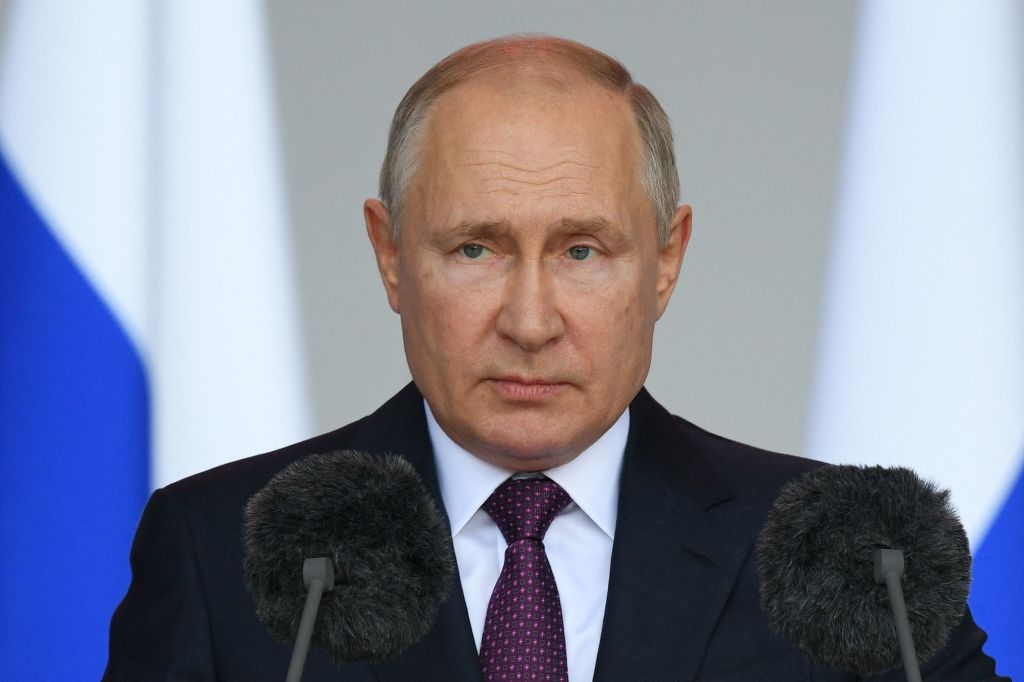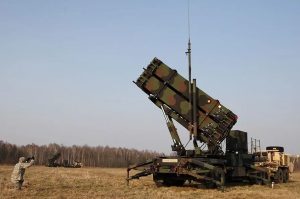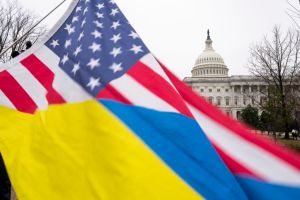“I can’t tell you how this ends. All I can tell you is that I just hope millions of people don’t die, or that both Ukraine and Russia aren’t both destroyed in some way thanks to this war.”
Those words, spoken to me on an encrypted smartphone app yesterday, are from a Ukrainian commander actively fighting Russian soldiers that I have known for years thanks to wargames I helped organize that brought together national experts, military officials, and policymakers from around the world.
When I asked him how both countries would be “destroyed” — before we lost connection, as often happens — he said, “[W]hen passion, politics, and death mix into a toxic brew, the warring parties all drink together — like here in Ukraine — any sense of rationality or perspective is washed away in the first sip. My fear is Russia won’t stop now until every bit of resistance is wiped out, meaning Ukraine will be turned into ash. But that also means NATO and the West will up their response as Moscow bombs us to dust. The West will punish Moscow to such an extent that Putin could be swept from power with Russia left a financial and societal trainwreck. Or, perhaps worse, a failed state with nuclear weapons.”
Then we lost the connection again.
I haven’t been able to get his words out of my head, as what he said is logical, an attempt to make sense out of an insane situation.
It seems that Russia has turned Ukraine into geopolitical quicksand. The more Moscow flails and kicks to get out of the trap it set, the more it hurts itself with every blow.
Putin clearly thought he was going to take over large sections of Ukraine with ease, and that the West would only impose limited sanctions on his regime as they did during his 2014 Crimea invasion.
Clearly, he was mistaken.
Right now, it would seem that Putin has committed to fighting his way out of his problems in Ukraine. Think of it as Russia’s own Dirty Dancing Doctrine — no one puts Vladimir Putin into a corner. That means Kyiv, Odessa, and any major city he can bomb to a cinder will be a target.
Here is where things get rather tricky — and dangerous for the entire world. Russia has enough military muscle to launch a war of attrition, as it has before in Chechnya and Syria — bomb and shell anything of value to force what it would see as a victory.
Indeed, while Ukrainian forces have waged war on Russia with amazing spirit and valor, Moscow has not used anywhere near the full weight of its military might. This is likely because it fears a backlash in international public opinion and sanctions that could threaten the very heart of the Russian economy and polity. Yet the moment is quickly approaching, especially as Ukraine’s large flatlands become a mudball, that Putin’s bombers will head to the sky to bomb anything that moves.
And we know how the West will respond: more and more financial pain and more and more weapons for Ukraine. Powered by social media platforms that for the first time ever are showcasing the hell that is modern warfare on a scale too horrific to imagine, the West will try to limit what Putin can do by making him pay for every bomb he drops.
That means a financial tsunami is building and Russia will sink into the abyss, maybe not now, but over the next few months. Moscow has already lost over $1 trillion on paper thanks to its war in Ukraine (if you combine the coming economic depression that will set in and the loss of Russia’s foreign exchange reserves as a shield to save the ruble). The more bombs drop, the more Russia, already a nation in decline, will die a slow and painful death.
What happens next is anyone’s guess. But we do know one thing: Ukraine’s economy will also be nearly destroyed, as millions of refugees flee and what is left of the population demands NATO and EU integration.
Then there is Putin. Can his government hold onto power if people have no access to money, credit, jobs, or hope for the future? Internet-savvy Russians know how to use VPN technology to get around Russian internet censors and can see what Putin has done to their country. For how long will they sit idle, allowing this carnage to continue? Many in Russia have already taken to the streets. How many more will turn out when they realize the extent of what Putin has unleashed on them, that Russia’s 140 million people have lost a generation’s worth of wealth and are now a rogue state on par with North Korea?
Putin said sanctions were akin to war. What he left out was that they will eventually make a casualty out of the Russian people, and the financial bombs are starting to hit their targets.
It could end up being that the war Putin has started, which cannot be easily turned off, could mean a sort of doom for both Ukraine and the Russian regime. Kyiv will be blown to bits, its people scattered all over Europe and the world, while Putin will be out of power and Russia weakened to the point of insignificance.
It’s horrifying to consider, and given the stakes, it isn’t even the worst-case scenario.
Harry J. Kazianis is the senior director at the Center for the National Interest. In the past, he served on the foreign policy team of 2016 presidential candidate Senator Ted Cruz and was on the Russia committee of the John Hay Initiative. He has held various thinks tank positions at the Heritage Foundation, CSIS: PACNET, and the Potomac Foundation. His work has appeared in the Wall Street Journal, the New York Times, and many other outlets.


















